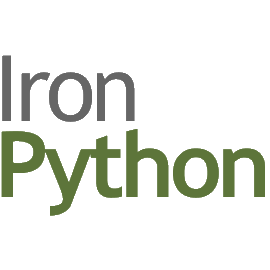Content that is all about programming and coding! Find examples of code often written in C# along with tutorials.
A Quick Brain-Dump on API Desgin I'll keep this one pretty brief as I haven't totally nailed down my thoughts on this. I still thought it was worth a quick little post: When you're creating a brand new API to expose some functionality of a system, should you design it with a strong focus on how the internals work? Should you ignore how internals work and make it as easy to consume as possible? Or is there an obvious balance? I find myself trying to answer this question without ever explicitly asking it. Any time I'm looking to extend or connect systems, this is likely to come up. Most Recently... Most recently I started trying to look at creating an API over AMQP to connect my game back-end to a Unity 3D front-end. I had been developing the back-end for…
Are you interested in learning about interfaces in C#? This article explains the idea behind a C# interface by showing examples of interfaces in code.
What Makes Good Code? It's been a while since I've had a programming oriented post, and I figured this would be a great topic to write about. It's been a topic I've been thinking about more and more over the last year and I've been experimenting with certain patterns and practices to see if certain things actually make code "better". A lot of the information presented in this series will be completely based on my opinion, but I'll try to back up my opinion with as many concrete examples as I can. If you have a differing opinion, I'd love to hear it in the comments. I'd also like to call out that much of what I'll be discussing is in the context of object oriented programming. To be specific, there may be mostly C# examples used. If this isn't something…
Background Thalmic Labs has started shipping their Myo armband that allows the wearer's arm movements and gestures to control different pieces of integrated technology. How cool is that? My friend and I decided we wanted to give one a whirl and see what we could come up with. We're both C# advocates, so we were a bit taken back when we saw the only C# support in the SDK was made for Unity. We decided to take things into our own hands and open source a Myo C# library. We're excited to introduce the first version of MyoSharp! The underlying Myo components are written in C++, and there's only several functions that are exposed from the library that we can access. In order to do this, we need to leverage platform invocation (PInvokes) from C# to tap into this functionality. Once you…
Article Dump #24 Welcome to the 24th issue of my (nearly) weekly article dumps. I don't have a theme or an update this week, so it's kept pretty short. I hope you find the following articles interesting though! Leave me a comment if you have any opinions on these Articles The 7 Values That Drive IDEO: In this article, the CEO of IDEO Tim Brown talks about the various values that his organization embraces to have a creative culture. Some of the ideas in the slides seem really high level or like generic fluff, but try thinking about what they would mean in your organization. It's one thing to glance at IDEO's list and say "Yeah, yeah... That's nice..." but when you actually think about how that fits in with your organization, you might actually realize you don't embody those values. Do…
Code Smells Welcome to the third edition of Code Smells! Periodically I’ll be posting about how to detect code smells and what they mean in terms of the big picture of your code. The previous installment can be found right here. What’s a code smell? Wikipedia says it perfectly: In computer programming, code smell is any symptom in the source code of a program that possibly indicates a deeper problem. Code smells are usually not bugs—they are not technically incorrect and don’t currently prevent the program from functioning. Instead, they indicate weaknesses in design that may be slowing down development or increasing the risk of bugs or failures in the future. These code smells are often based on my own opinion and experience with programming. If you disagree with what I'm saying in my post, please don't hesitate to post a comment.…
Fragments: A Little Background Update: The actual application is available on the Google Play store. Once upon a time, Android developers used only two things called activities and views in order to create their user interfaces. If you're like me and you come from a desktop programming environment, an Activity is sort of like a form or a window. Except it's more like a controller for one of these classes. With that analogy in place, a view is then similar to a control. It's the visual part you're interacting with as a user. I remember the learning curve being pretty steep for me being so stuck in my desktop (C# and WPF) development, but once I came up with these analogies on my own, it seemed pretty obvious. So to make an Android application, one would simply put some views together…
Code smells are hints that code is taking a potentially nasty turn. What are some common code smells that we should all be looking out for as we're coding?
Code smells are hints that code is taking a potentially nasty turn. What are some common code smells that we should all be looking out for as we're coding?
Previously, I was expressing how excited I was when I discovered Python, C#, and Visual Studio integration. I wanted to save a couple examples regarding dynamic code for a follow up article... and here it is! (And yes... there is code you can copy and paste or download). EDIT: Wait! Before you head to far, you might want to check out this more recent article on Python and C#! What does it mean to be dynamic? As with most things, wikipedia provides a great start. Essentially, much of the work done for type checking and signatures is performed at runtime for a dynamic language. This could mean that you can write code that calls a non-existent method and you wont get any compilation errors. However, once execution hits that line of code, you might get an exception thrown. This Stack…




